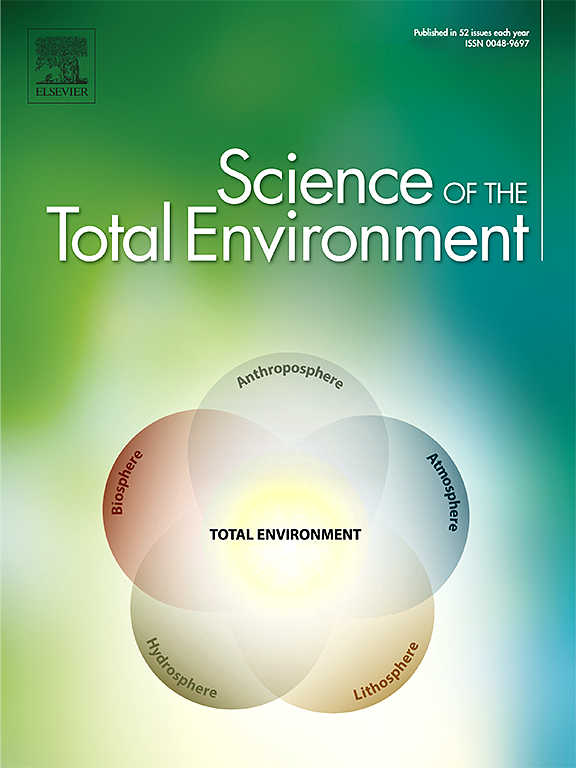A new process-based approach for defining karst aquifer vulnerability to contamination risks under global changes
IF 8.2
1区 环境科学与生态学
Q1 ENVIRONMENTAL SCIENCES
引用次数: 0
Abstract
Karst groundwater resources play a crucial role in global water supply. But due to their intrinsic heterogeneity, karst aquifers are especially vulnerable to contamination and environmental changes. To sustain karst water quality, assessing karst aquifer vulnerability to contamination and revealing the influence of changing environmental conditions on karst vulnerability are essential. This study unveils the impact of climate and land-use changes on karst aquifer vulnerability by proposing a novel process-based approach that uses the relationship between karst transport parameters and karst flow and site characteristics. Karst transport parameters are derived from tracer tests previously conducted within the study area by applying a simple transport model to observed breakthrough curves (BTCs). By coupling this transport model with a karst flow model we can predict the BTCs under projected changing environmental conditions. We apply our approach to the karstic aquifer system of the Unica springs that largely contribute to drinking water supply in Southwestern Slovenia. Our findings indicate that karst aquifer vulnerability can vary depending on the specific hydrogeological setting, prevalent flow conditions, as well as the current and future climate, and land use. More specifically, we find that impacts of climate change on karst aquifer vulnerability exceed the impacts of land-use changes. For our study site, we find that both higher and lower karst vulnerabilities can occur in future projections. While seasonally changing patterns of precipitation and temperature can lead to a decreased vulnerability in the summer months, they can lead to an increased vulnerability in the spring and winter months. Our study demonstrates that the proposed approach can be used as a tool for vulnerability assessments in karst aquifers, especially for revealing the impacts of future changes on karst water resources. We emphasize the need for continuous improvements in this field to ensure a safe management of karst water resources in the future.

求助全文
约1分钟内获得全文
求助全文
来源期刊

Science of the Total Environment
环境科学-环境科学
CiteScore
17.60
自引率
10.20%
发文量
8726
审稿时长
2.4 months
期刊介绍:
The Science of the Total Environment is an international journal dedicated to scientific research on the environment and its interaction with humanity. It covers a wide range of disciplines and seeks to publish innovative, hypothesis-driven, and impactful research that explores the entire environment, including the atmosphere, lithosphere, hydrosphere, biosphere, and anthroposphere.
The journal's updated Aims & Scope emphasizes the importance of interdisciplinary environmental research with broad impact. Priority is given to studies that advance fundamental understanding and explore the interconnectedness of multiple environmental spheres. Field studies are preferred, while laboratory experiments must demonstrate significant methodological advancements or mechanistic insights with direct relevance to the environment.
 求助内容:
求助内容: 应助结果提醒方式:
应助结果提醒方式:


